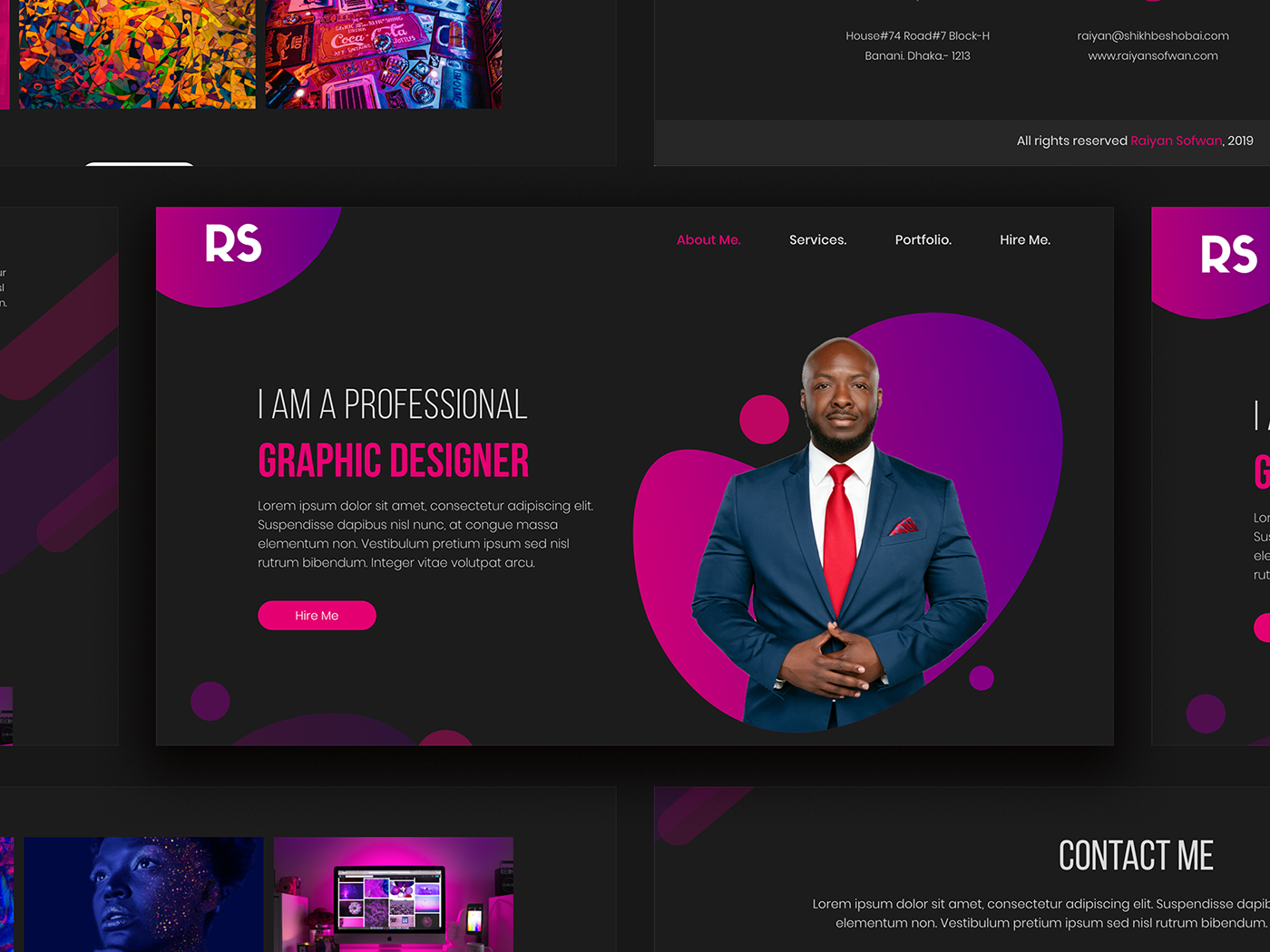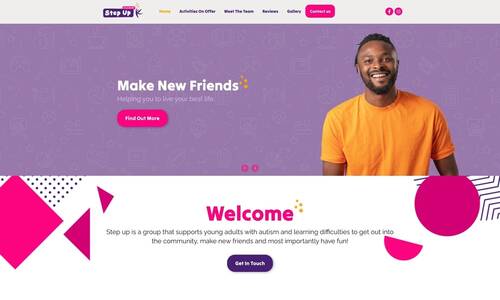Key Factors to Consider When Planning Your Website Design
Boost Engagement With Cutting-edge Site Design Solutions
A thoughtfully crafted individual experience, underpinned by critical visual style and interactive aspects, can dramatically enhance individual involvement. By checking out numerous techniques such as responsive style and customized material, businesses can create a platform that not just mesmerizes individuals but also promotes long-lasting loyalty.

Comprehending Customer Experience
Recognizing customer experience (UX) is crucial for creating efficient website design services, as it directly affects how users connect with electronic platforms. An extensive UX method includes numerous components, including customer, accessibility, and functionality satisfaction, every one of which add to the overall efficiency of a site.
To begin with, usability concentrates on just how easily users can navigate and discover the details they look for - website design. A well-structured design, instinctive navigation, and clear phone call to activity are essential components that boost use. Access guarantees that all customers, including those with specials needs, can effectively engage with the internet site. This entails creating web content that is certified with availability requirements and can be conveniently accessed making use of assistive technologies.
Additionally, understanding individual characters is important for customizing the experience to fulfill specific target market needs. By performing user study and screening, developers can collect understandings that inform layout decisions, ensuring the website not only satisfies visual goals yet also meets useful requirements. Ultimately, a thoughtful technique to UX style cultivates interaction, urges retention, and boosts general customer satisfaction, which are vital for the success of any type of electronic system.
Visual Style Approaches
Incorporating efficient aesthetic layout methods is important for capturing individual interest and boosting the total individual experience on a web site. A well-balanced aesthetic hierarchy overviews customers through the content, allowing them to conveniently browse and soak up information. This can be achieved through the tactical use of typography, color design, and spacing, which jointly develop a natural and engaging layout.
Shade plays a pivotal role in stimulating emotions and establishing brand name identity. Using a balanced shade scheme that aligns with the brand name's principles can cultivate experience and trust. Additionally, incorporating top notch pictures and graphics enhances visual appeal and can dramatically boost user involvement.
Whitespace, frequently ignored, is equally essential as it allows content to take a breath and avoids frustrating individuals with mess. It helps with simpler analysis and understanding, resulting in a much more pleasurable searching experience.
Lastly, uniformity in style aspects-- such as switch icons, designs, and fonts-- ensures a seamless customer journey, reinforcing the brand's professionalism and reliability. By tactically executing these aesthetic style approaches, sites can not just draw in visitors but additionally motivate them to stay longer and involve even more deeply with the content.
Interactive Components for Involvement
Involving users effectively frequently rests on the execution of interactive aspects that welcome participation and promote a dynamic surfing experience. These components, consisting of tests, surveys, and interactive infographics, encourage customers to actively participate as opposed to passively eat web content. By integrating such functions, web sites can not just catch interest yet likewise boost customer retention.

Gamification is one more effective strategy. Incorporating game-like components, such as success or rewards for completing tasks, can transform ordinary communications into satisfying experiences. This technique not just boosts engagement however likewise urges users to return, creating a loyal target market.
Additionally, interactive aspects can help with social sharing, enhancing a web site's reach. Functions like comment areas, share switches, and user-generated content locations foster area interaction, turning visitors into active individuals. website design. Eventually, the strategic use of interactive aspects is crucial for developing a engaging and compelling website that resonates with customers
Adaptive and responsive Design
A well-designed internet site needs to focus on flexible and receptive design to guarantee optimum user experiences throughout a range of tools and screen dimensions. Receptive layout utilizes liquid grids and flexible photos, allowing the format to automatically adjust based upon the customer's display dimension. This technique ensures that individuals can conveniently communicate and navigate with the web content, despite whether they are using a smart device, desktop, or tablet .
In contrast, flexible layout uses predefined designs that are tailored to particular device groups. This suggests that the web site identifies the kind of tool being made use of and serves the proper design, which can enhance packing times and enhance the display screen of essential aspects. While both techniques intend to improve usability, receptive style is frequently favored for its fluidity and seamless transition in between gadgets.
Integrating adaptive and receptive style not only improves customer fulfillment however likewise positively affects internet search engine positions. Browse visit this website engines focus on mobile-friendly websites, therefore boosting exposure and bring in more site visitors. Consequently, buying these design methods is essential for companies aiming to Check Out Your URL engage their audience properly and keep an affordable edge in today's electronic landscape.
Analyzing Individual Responses and Data
Individual responses and information analysis are important elements of reliable web site design, as they give beneficial understandings right into individual habits and choices. By systematically examining and collecting user comments via surveys, functionality screening, and analytics tools, designers can recognize pain factors and locations for improvement. This data-driven strategy allows services to fine-tune their site aspects, making sure that the customer experience aligns with audience assumptions.
Analyzing metrics such as bounce rates, time on page, and click-through rates offers a quantitative viewpoint on individual involvement. These metrics help designers determine which material resonates and which locations may call for optimization. A/B testing can be employed to review variants in design, allowing developers to make enlightened choices based on user communications.
Integrating individual feedback look at here not only boosts website usability but additionally promotes a feeling of area and trust fund. Involving with individuals with feedback loopholes grows commitment and motivates repeat gos to. Ultimately, leveraging customer responses and information evaluation is essential to developing a dynamic, user-centered internet site that adjusts to developing individual needs and choices, thus driving greater interaction and complete satisfaction.
Verdict

An attentively crafted individual experience, underpinned by calculated aesthetic design and interactive elements, can considerably enhance customer interaction.Integrating effective visual style strategies is vital for capturing individual attention and improving the overall individual experience on an internet site.Individual feedback and information evaluation are essential parts of reliable website style, as they give valuable insights right into individual habits and choices. Inevitably, leveraging user responses and data analysis is important to developing a vibrant, user-centered web site that adjusts to progressing customer needs and choices, thereby driving higher involvement and complete satisfaction.
In conclusion, cutting-edge internet site design remedies considerably enhance individual interaction by prioritizing individual experience, employing reliable aesthetic strategies, and incorporating interactive components.